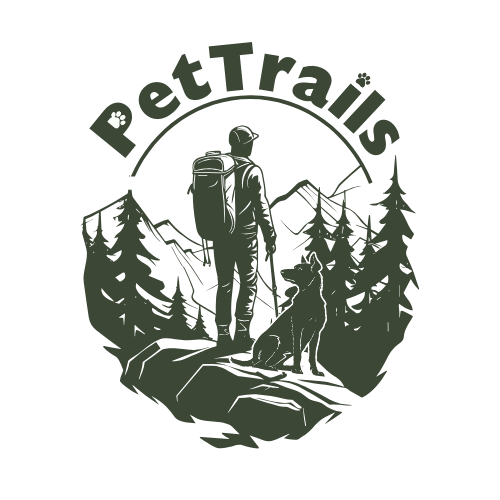
Hiking with Sensory‑Impaired Dogs
Share
Hiking with your dog is a bonding experience like no other. But if your companion has hearing or vision impairments, or both, you might wonder: is it still safe? Can they enjoy the trail? The answer is yes, with the right preparation.
Sensory impaired dogs are more common than many realize. Hearing loss affects about 5 to 10 percent of dogs, and vision decline becomes increasingly common with age. While these impairments can pose challenges, they also open up opportunities for deeper communication and trust.
This guide offers practical tips, gear suggestions, and insights to help you and your sensory impaired dog make the most of every trail.
How Common Are Sensory Impairments in Dogs?
- Hearing loss affects 5 to 10 percent of dogs, with much higher rates in some breeds:
- Dalmatians: approximately 17.8 percent (UK data)
- Australian Cattle Dogs: approximately 10.8 percent
- Bull Terriers, English Setters, and Cocker Spaniels also show elevated rates
- Vision impairment is especially tied to age:
- Dogs under 8: around 2 to 3 percent
- Dogs 8 and older: between 14 and 24 percent
- Dual sensory loss (deaf and blind) occurs in:
- 14 to 16 percent of senior dogs (owner reported)
- 7 to 14 percent (clinical testing)
These dogs may need extra care, but they also thrive with a little adaptation.
Understanding Trail Challenges
| Impairment | Common Trail Challenges | What to Watch For |
|---|---|---|
| Hearing | Cannot hear commands, wildlife, or dangers | Does not respond when called, may startle easily |
| Vision | Harder to navigate obstacles, stairs, or changes in terrain | Hesitates, bumps into things, unsure on uneven surfaces |
| Both | Increased dependence on handler and higher mental load | Cautious behavior, clinging, fatigue, or disorientation |
Trail Success: Gear and Preparation
Leashes and Harnesses
Use a hands free leash or padded harness for better control and guidance. Vision impaired dogs benefit from a chest led harness that offers extra stability.
ID Tags and Collars
Attach a clear ID tag to your dog’s collar that states their condition, such as “Deaf Dog” or “Blind Dog.” This helps others understand their behavior if they approach your dog on the trail or if your dog gets lost.
Using an LED or reflective collar also increases visibility, especially during early morning or evening hikes, which adds another layer of safety.
Communication Tools
Teach touch based cues or use a vibration collar with proper training. Hand signals work well for hearing impaired dogs. Use consistent physical or visual signals for stopping, turning, and recall.
Smart Trail Selection
Choose wide, stable trails with minimal elevation change. Avoid routes with cliffs, sharp turns, or water crossings if vision is limited. Stick to familiar trails to build your dog’s confidence.
Practice Makes Progress
Simulate trail conditions at home or in your neighborhood. Let your dog explore textured surfaces, step obstacles, and scent markers. Celebrate each success to build trust and comfort.
Safety and Risk Management
Hike with a partner whenever possible, especially if your dog has dual sensory loss. Keep your dog leashed at all times, since sensory impairments increase the risk of becoming lost or startled. Avoid crowded or off-leash trails where sudden encounters with other dogs may be overwhelming or unsafe.
Emotional and Mental Well Being
Dogs with sensory loss rely more on smell, touch, and predictable routines. Let your dog sniff and explore freely as it helps build confidence and enriches the experience.
Stay calm and consistent. Avoid sudden changes in pace or route. End each hike with something your dog loves and observe their comfort level. Joyful hiking is possible at every stage of sensory ability.
Conclusion
Hiking with a sensory impaired dog is not about limitations. It is about trust, teamwork, and tailoring the adventure. Whether your dog is deaf, blind, or both, the trail is still open and full of possibility. With the right mindset and preparation, every hike can be safe, joyful, and deeply rewarding.
Do you hike with a sensory impaired pup? We would love to hear about your experience. Drop a comment below or share your story with our community.
